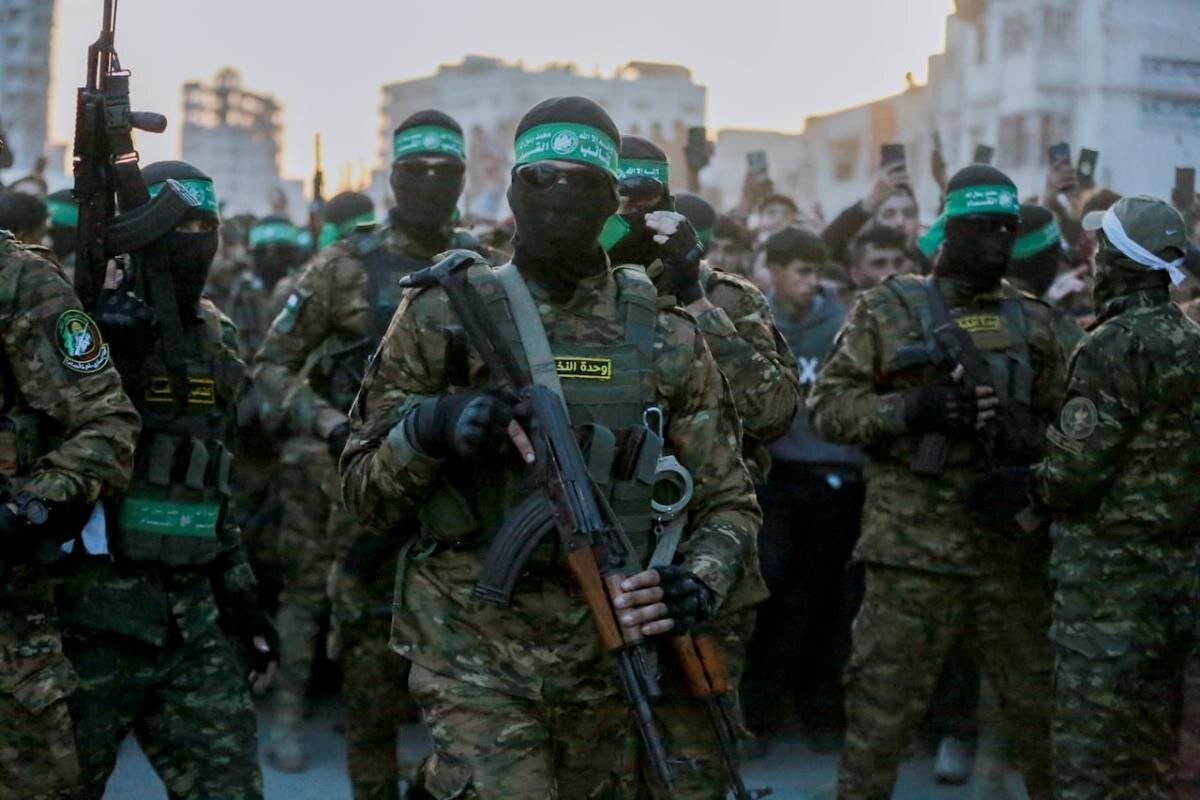Hamas scenes highlight Israeli failure

TEHRAN – The sight of Hamas fighters on the streets of Gaza after the ceasefire will go down as a major blow to the Israeli regime.
Just hours after the ceasefire took effect on Sunday, Hamas fighters in military fatigues emerged unexpectedly.
Since then, additional footage has surfaced showing larger gatherings with an increased presence of Hamas fighters clad in military uniforms.
The images have not escaped the attention of Western news media.
“Hamas’s armed Qassam Brigades emerged in their distinctive black balaclavas and green headbands,” the Financial Times wrote on Tuesday with the headlines: “Is Hamas back?”
The paper notes that Israeli Prime Minister Benjamin Netanyahu had vowed to “destroy” the militant group in the wake of its October 7, 2023 attack.
“Instead, after 15 months of fighting an underground guerrilla war, Hamas’s officials, fighters and policemen have in the days since the deal emerged from the rubble of the shattered enclave — seemingly ready to rule Gaza once again.”
Mkhaimar Abusada, a political scientist at Northwestern University in the U.S., told the paper, “Hamas has not ended despite its military losses. The way the hostages were handed over was a display of force and an act of defiance towards Israel.”
The FT also pointed out that images of Hamas fighters back above ground and asserting their authority shocked the Israeli public, and raised serious questions about the effectiveness of the ferocious campaign unleashed on the strip.
Shortly after the ceasefire came into effect, the Government Media Office in Gaza announced a plan to restore security and order. It highlighted that municipalities had started reopening and repairing roads.
Over the past months, Israeli officials have expressed growing concerns over the effectiveness of the relentless military campaign against the Gaza Strip.
Despite the scale of the war and the unprecedented resources poured into it, questions and anger continue to rise in Israeli media about its long-term impact and strategic outcomes.
As time passes, doubts are mounting within Israeli circles about whether the war has achieved its intended results.
Meanwhile, The Wall Street Journal noted that Hamas’ decision to deploy fighters during the handover of Israeli prisoners was a deliberate move to demonstrate its continued dominance in the region.
Despite being classified by the United States as a terrorist organization, Hamas showed the unprecedented level of Israeli force had failed to eliminate it or replace it with an alternative.
The newspaper added that this public display of power suggests that relief organizations and governments will have to work with Hamas as reconstruction efforts begin in the coming weeks; an outcome the Israelis desperately sought to avoid.
Gershon Baskin, a former Israeli negotiator on prisoner issues in Gaza, argued that Hamas’ ongoing presence is a clear challenge to Netanyahu’s government and military. It highlights that Israel’s war objectives were always unrealistic.
Former Mossad chief Tamir Pardo previously acknowledged that while Hamas had taken significant losses, it remains a powerful force, continuing to control Gaza and manage its affairs.
During a speech on the Biden administration’s Middle East policy at the Atlantic Council last Tuesday, former U.S. Secretary of State Antony Blinken underscored the ongoing threat posed by Hamas in Gaza.
“Hamas remains a deeply dangerous force,” Blinken said, adding that despite losses, the group has managed to replenish its ranks.
“We assess that Hamas has recruited almost as many new militants as it has lost,” he revealed.
“That is a recipe for an enduring insurgency and perpetual war.”
Blinked further highlighted, “That’s exactly what’s happened in northern Gaza since October 7, 2023. Each time Israel completes its military operations and pulls back Hamas militants regroup and reemerge because there’s nothing else to fill the void.”
